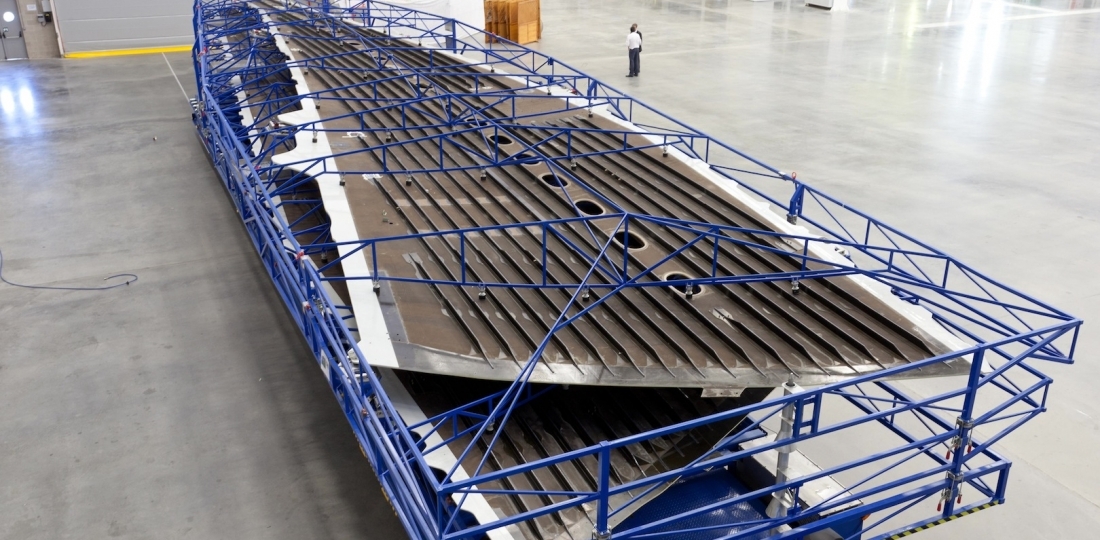January 22, 2016 Updated 1/22/2016
Email Print

Airbus Each Airbus A350 uses $ 5 million worth of Hexcel Corp. material, including composites on the wings.
For Hexcel Corp., 2015 was a year to remember. But officials at Celanese Corp. were glad to flip the calendar to 2016.
Both materials firms reported full-year 2015 results on Jan. 21. Stamford, Conn.-based Hexcel saw sales for the year stay essentially flat at just under $ 1.9 billion, but the firm’s annual profit jumped more than 13 percent to $ 237.2 million. At Dallas-based Celanese, sales tumbled almost 14 percent to just under $ 5.7 billion as profit slumped 51 percent to $ 304 million.
Hexcel officials touted growth in the commercial aerospace market, which now accounts for almost 70 percent of the firm’s sales. Hexcel’s sales into that market grew 8 percent during 2015, due in part to the ramp-up of the Airbus A350 XWB jet airliner.
Each A350 uses $ 5 million of Hexcel materials. The firm’s materials also are used on the Airbus A320neo aircraft, which debuted earlier this month. In a Jan. 21 news release, President, Chairman and CEO Nick Stanage said that Hexcel is expecting growth of 8.5 percent from commercial aerospace in 2016.
“The company’s focus in 2016 remains driving manufacturing throughput, capacity expansion and superior execution…led by commercial aerospace,” he added.
Hexcel’s main transaction in 2015 was buying out joint venture partner Formax UK Ltd., a composites maker based in Leicester, England. Hexcel previously had owned half of Formax. No purchase price was disclosed.
The picture was more challenging at Celanese. The firm “began 2015 facing multiple headwinds,” Chairman and CEO Mark Rohr said in a Jan. 21 news release, adding that 2016 “is starting off with its own set of challenges.” Those challenges include further price declines in crude oil and in “the broad raw material complex,” as well as continued uncertainty in Asian demand and weakening Chinese currency.
In spite of these challenges, Rohr said that Celanese officials “are confident that our business models…provide the framework needed to manage the current uncertainty and strengthen our ability to generate high levels of free cash flow.” As a result, Celanese expects adjusted earnings per share to grow 5-10 percent in 2016.
2015 sales in Celanese’s Materials Solutions unit — including acetal, PPS and other specialty resins — fell 12 percent to just under $ 2.3 billion. The unit contributed almost 40 percent of the firm’s total sales before eliminations.
Celanese remained active on the materials front in 2015, adding polyetheretherketone (PEEK) resin to its product mix for several markets including automotive and electrical. The firm also is increasing its production capacity for ultra-high molecular weight polyethylene (UHMW-PE) in Bishop, Texas. When the expansion is completed in May, the unit will have annual production capacity of almost 84 million pounds.
On Wall Street, Hexcel and Celanese each saw their per-share stock prices take wild rides during 2015. But as of Jan. 22, each firm’s price wasn’t far off from where they were at the start of the previous year.
Hexcel’s per-share price began 2015 around $ 40, then peaked near $ 54 in mid-August before declining. It was near $ 41.25 in early trading Jan. 22.
The share price run seen by Celanese was even more volatile. It began 2015 around $ 59, rose to $ 73 in early July, but then fell back to $ 55 by late August. The stock then got its second wind and spent most of November above $ 70 before falling again. It was around $ 61.50 in early trading Jan. 22.


























